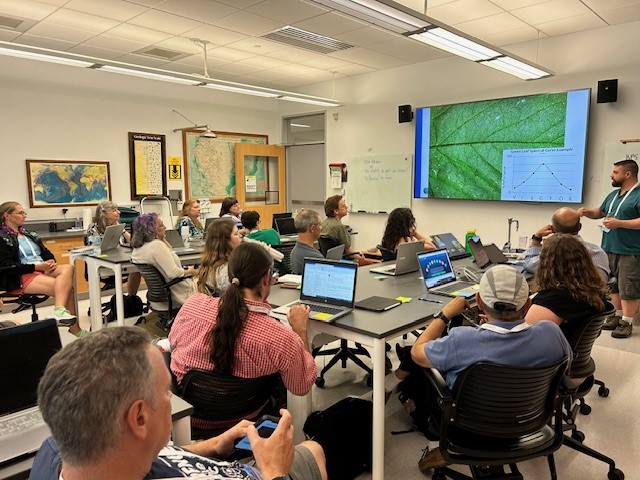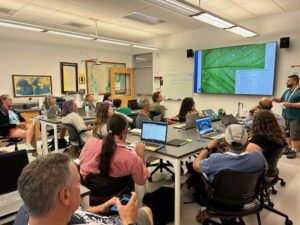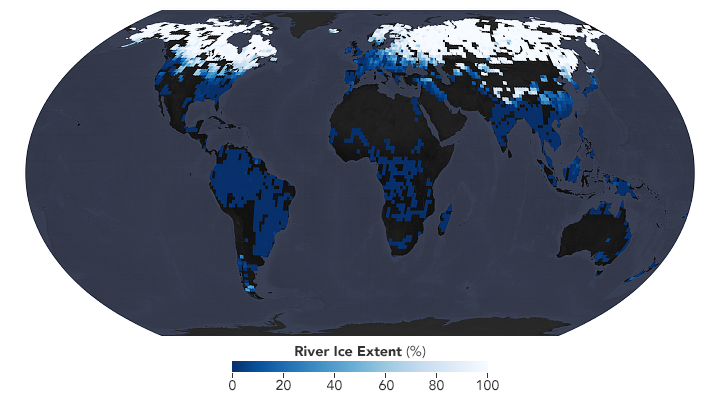
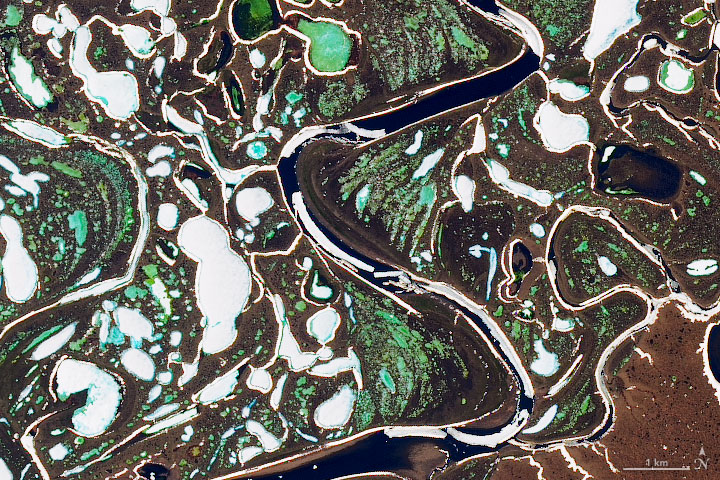
A first-of-its-kind study has used 400,000 NASA/USGS Landsat images collected between 1984 and 2018 to understand global river ice trends. According to the study, published in Nature on Jan. 1, 2020, the extent of wintertime river ice has declined globally over the past three decades, with rivers of the Tibetan Plateau, Alaska, and eastern Europe showing the biggest declines.
Led by researchers at the University of North Carolina–Chapel Hill and Texas A&M University, the study projects six days less of river ice cover for every 1ª C rise in global temperature. Rivers of the Rocky Mountains and northeastern U.S. will experience heavy future ice cover declines (along with rivers of eastern Europe and the Tibetan Plateau).
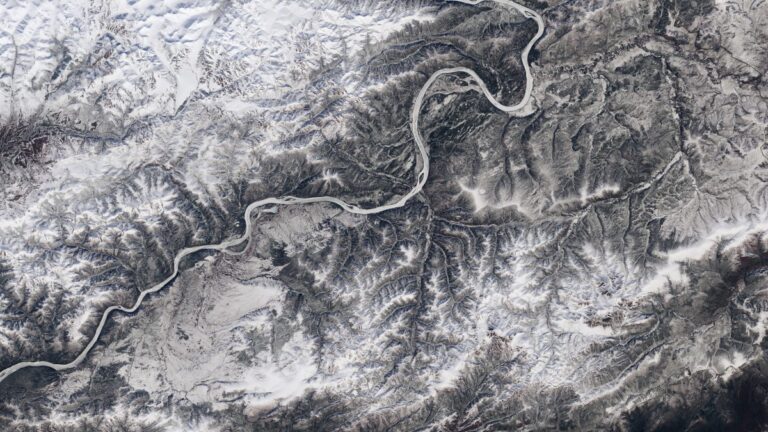
More than half of Earth’s rivers are covered with ice seasonally, these rivers drain a third of the planet’s landmass. The later freeze-ups and earlier thaws that global rivers are experiencing, come with ecologic and economic impacts.
For more information, see:
+ River Ice Is Disappearing, Eos
+ Rivers Are Getting Less Icy, NASA Earth Observatory
+ New study estimates the global extent of river ice loss as Earth warms, UNC–Chapel Hill University Communications
Reference:
Yang, Xiao, Tamlin M. Pavelsky, and George H. Allen. 2020. “The past and future of global river ice.” Nature 577 (7788):69-73. doi: 10.1038/s41586-019-1848-1.

